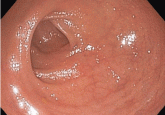Article

Making the most of currently available bowel preparations for colonoscopy
- Author:
- Ashish Atreja, MD, MPH, FACP
- Sansrita Nepal, MD
- Bret A. Lashner, MD, MPH
The authors review the available regimens, offer an algorithm for choosing an appropriate regimen, and provide instructions for patients.
